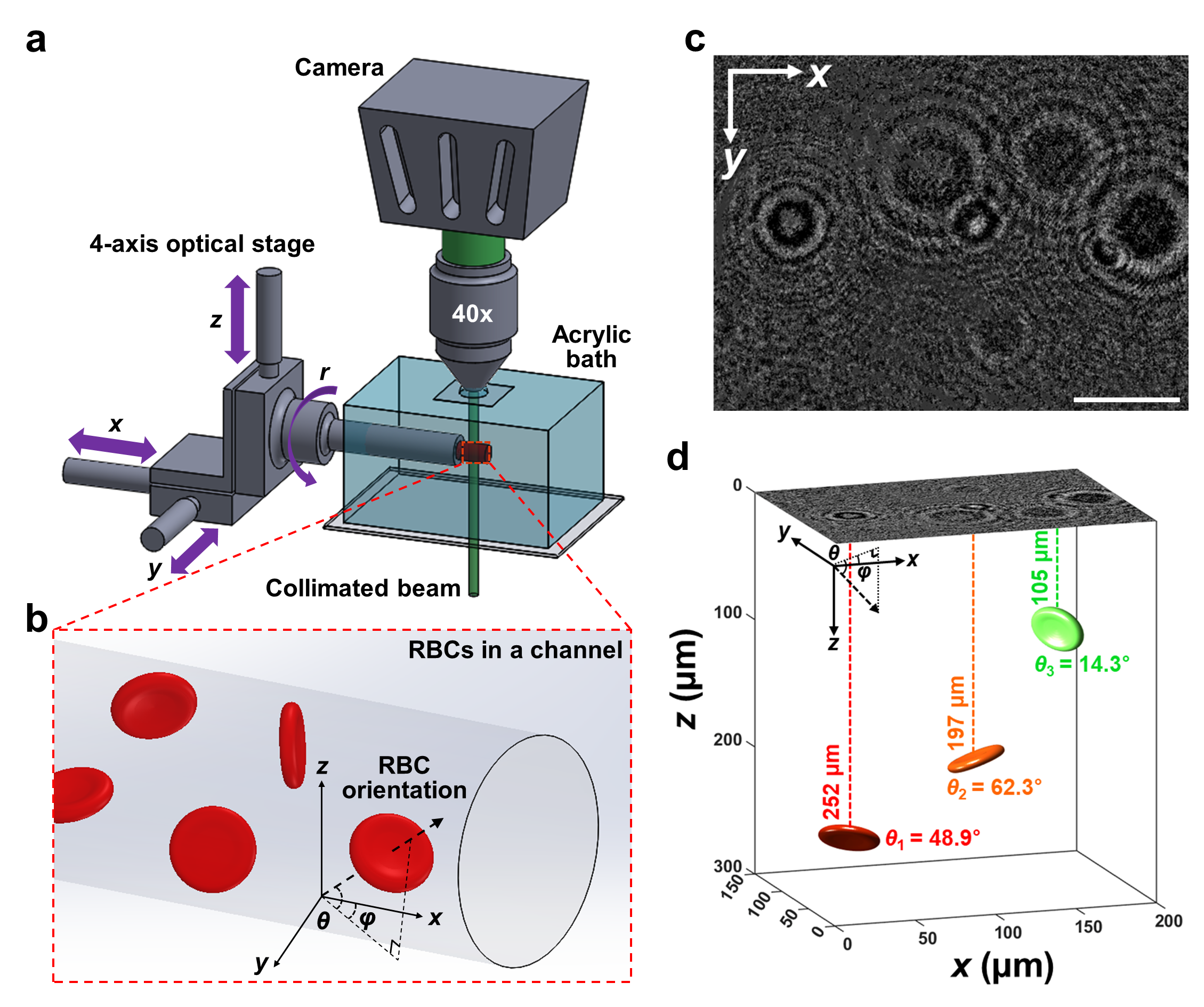BIOFLow International Research Experience for Students (IRES)
Mailing Address
Cleveland State University, Washkewicz College of Engineering
2121 Euclid Ave., WH 305
Cleveland, Ohio 44115-2214
Campus Location
Washkewicz Hall Room 305
2300 Chester Avenue
Phone: 216-687-2555
Fax: 216-687-9280
engineering@csuohio.edu
Website Issues Only
engineering@csuohio.edu
Measurement of 3D dynamics of single RBCs using digital in-line holographic microscopy and deep learning
Background.
Red blood cells (RBCs) are an important indicator of hematologic diseases, such as sickle cell anemia, stomatocytosis, and malaria infection. The rheological characteristics of RBCs affect the 3D translational and rotational behaviors of RBCs flowing in blood vessels. However, conventional techniques for measuring 3D dynamics of RBCs still have some technical limitations, including complicated optical setups and tedious post-image processing [1, 2]. To overcome these limitations, digital in-line holographic microscopy (DIHM) [3] and deep learning techniques would be utilized to develop an image-based method for measuring 3D dynamics of RBCs. Holographic images of RBCs at various in-plane and out-of-plane angles will be acquired using a DIHM. The holograms of single RBCs and the corresponding ground-truth angles will be used to train deep learning algorithms. After training deep learning algorithms, the 3D translational and rotational motions of RBCs can be extracted from the consecutive holograms of RBCs flowing in microchannels under various microfluidic conditions.

Figure 1. Measurement of 3D position and orientation of RBCs. (a) Optical setup design of the DIHM system; (b) RBCs in a micro-channel;(c) A typical holographic image of three RBCs in a 3D volume; (d) 3D positional and rotational information of three RBCs extracted from a single holographic image.
IRES student involvement.
Mr. Jihwan Kim will work with an IRES student on this project. The IRES student will generate holographic images of RBCs at various in-plane and out-of-plane angles. The holograms of RBCs and the corresponding angles will be trained by adopting deep learning algorithms. The performance of the proposed methodology will be validated by applying the trained model to consecutive holograms of RBCs flowing in a microchannel.
References
[1] Dupire, J., Socol, M., Viallat, A., 2012. Full dynamics of a red blood cell in shear flow. Proc. Natl Acad. Sci. 109(51), 20808-20813.
[2] Merola, F., Memmolo, P., Miccio, L., Savoia, R., Mugnano, M., Fontana, A., D'ippolito, G., Sardo, A., Iolascon, A., Gambale, A., Ferraro, P., 2017. Tomographic flow cytometry by digital holography. Light Sci. Appl. 6, e16241.
[3] Choi, Y.S., Seo, K.W., Sohn, M.H., Lee, S.J., 2012. Advances in digital holographic micro-PTV for analyzing microscale flows. Opt. Lasers Eng. 50(1), 39-45.
Mailing Address
Cleveland State University, Washkewicz College of Engineering
2121 Euclid Ave., WH 305
Cleveland, Ohio 44115-2214
Campus Location
Washkewicz Hall Room 305
2300 Chester Avenue
Phone: 216-687-2555
Fax: 216-687-9280
engineering@csuohio.edu
Website Issues Only
engineering@csuohio.edu